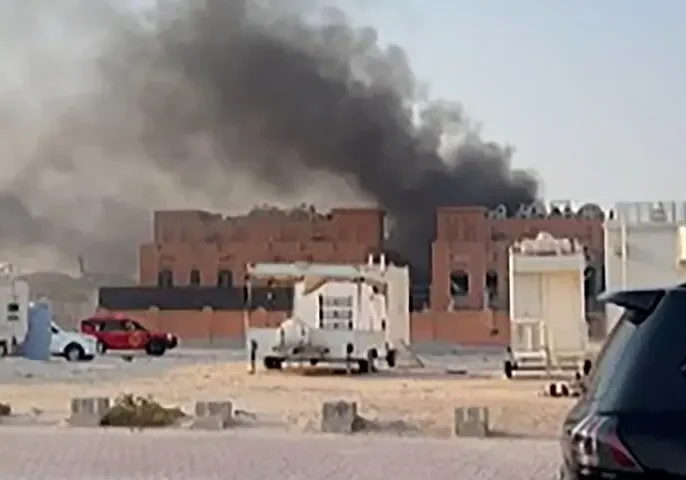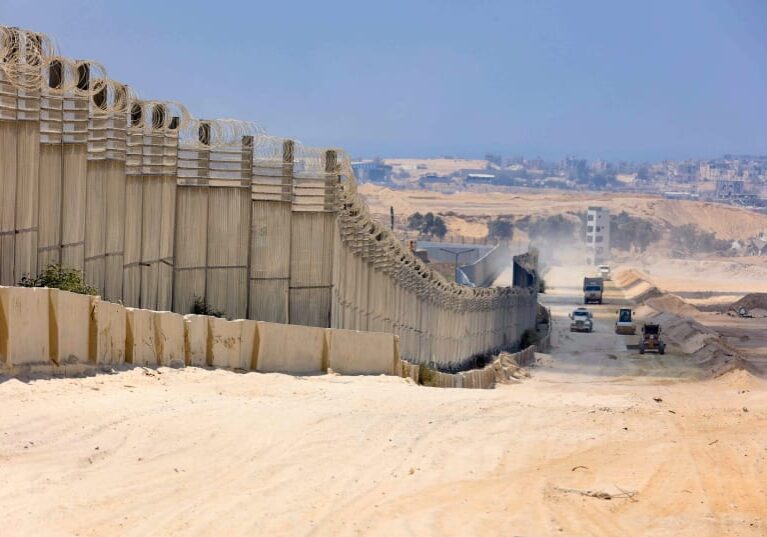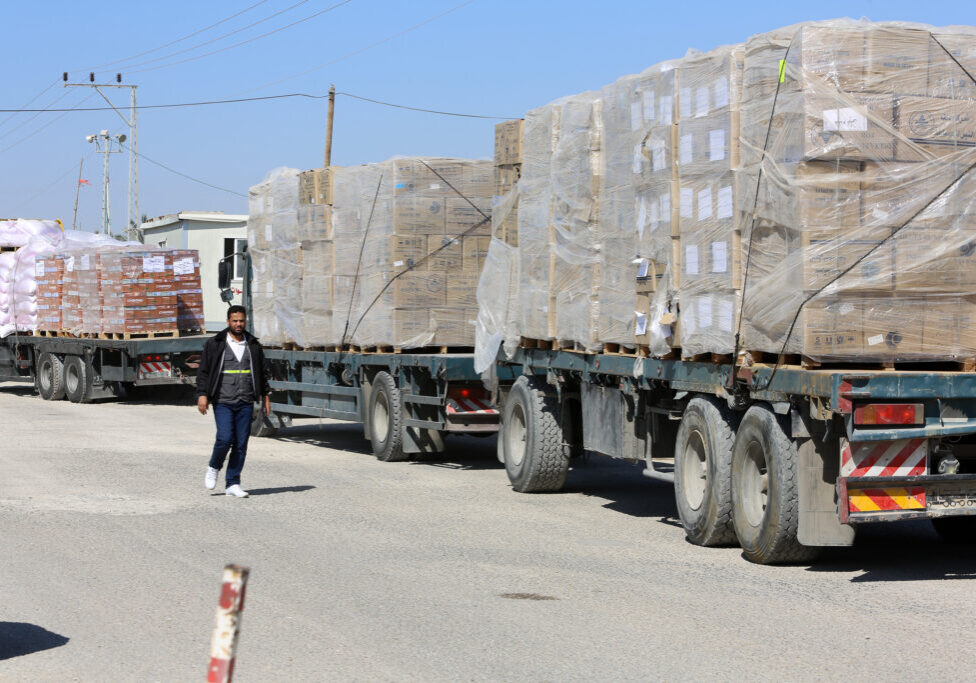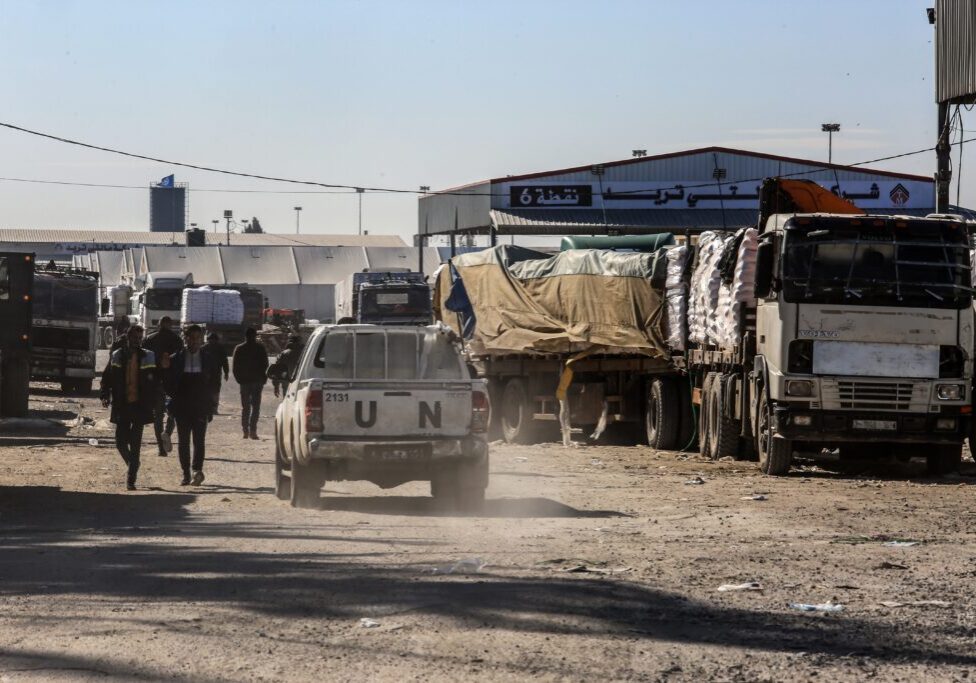Australia/Israel Review
Understanding the Muslim Brotherhood
Jul 2, 2012 | Barry Rubin

Barry Rubin
Today, the Muslim Brotherhood is the most important international political organisation in the Arabic-speaking world. It just won the presidency of Egypt and is the dominant party in Egypt’s Parliament, having obtained about 47% of the vote there and in the Tunisian Government, having received 40% of the ballots. In the form of Hamas, now an explicit branch of the movement, it rules the Gaza Strip.
It is the leadership of the opposition in the Palestinian Authority (West Bank) and in Jordan, while the local Brotherhood controls the internationally recognised leadership (the Syrian National Council) of the Syrian opposition in the civil war there. Much smaller Brotherhood groups exist in several other Arab countries.
Yet even that is not all. The Brotherhood has become the most important group among Muslims in Europe and North America, too, often directing communities and representing them in dealings with government and non-Muslim society as well. It should be stressed, however, that it is a decentralised organisation and there is no close coordination of the branches in different countries.
What is most important to understand about the Brotherhood is that, despite its religion-based ideology, it should be viewed in political, not theological terms. It is and has always been a revolutionary organisation seeking to seize state power and then to transform thoroughly the societies where it operates.
This point does not imply any necessary opposition to democratic elections or playing within parliamentary rules. After all, the Brotherhood ran candidates for years in Egyptian elections under the Mubarak regime, though it was not allowed to run as its own party, and has played a parliamentary role for years in Jordan. In the Gaza Strip, however, after it ran in Palestinian elections and won, Hamas seized power by force.
The Brotherhood’s most important ideological adviser, the Egyptian but Qatar-based Yusuf al-Qaradawi, has strongly endorsed electoral politics for almost a decade. In response to al-Qaeda, which rejected elections, al-Qaradawi said there was no reason not to run candidates, especially since the Brotherhood would win.
Early History
The Muslim Brotherhood was founded in 1928 in Egypt by the school teacher Hasan al-Banna. At that time Islam was at a relative low point in affecting politics. The direct inspiration for the new group was the abolition of the Caliphate, which had existed at least nominally since Islam began 12 centuries earlier, by the new Turkish republic. For al-Banna and his friends, Islam had to be restored to centre-stage not only socially but also politically.
At that time, nationalism was in the ascendancy. With British help, during World War I the Arab nationalists had revolted against the Ottoman Turkish Sultan-Caliph, to whom they supposedly owed fealty in Islamic terms. Arab countries had been formed that were tending toward relative secularism. Islamists were a small minority, many of them having been Arabs who had been on the losing side by continuing to back Ottoman rule.
There had been a number of leading thinkers in Egypt, notably Muhammad Abdu and Rashid Ridda, who had argued that Islam was an important element in the country’s national identity and development. They tended, however, to favour a somewhat modernised Islam. The Brotherhood represented a more conservative reaction against the changes taking place in Egypt and the Arab world.
During the 1920s and 1930s, the movement grew quickly, establishing branches in other countries, notably Syria. It reached out to allies, most importantly the Grand Mufti of Jerusalem, Hajj Amin al-Husseini, and developed contacts as far away as the Indian subcontinent. But overall it remained a relatively minor force in an Egyptian national life dominated by the King and relatively liberal parties that sought a more European-style system and worldview for the country.
A key element in the development of the Brotherhood was its admiration for and eventual alliance with Nazi Germany. The Germans subsidised the Brotherhood before and during World War II. The height of their cooperation came in 1942. As German forces approached Egypt from the west, the Brotherhood prepared an uprising and called for the massacre of the Jews and Christians in the country. Large amounts of German-supplied arms were hidden to be ready for the revolt. But the British defeat of General Erwin Rommel’s forces and decisive British action in Cairo kept the country under control.
After 1945, Egypt was in an unstable situation. The Brotherhood organised a secret group for terrorist activities and also, in 1947, recruited volunteers to fight to turn all of Palestine into an Islamist state, armed with the guns the Germans had provided five years earlier. One of the soldiers was Yasser Arafat.
As a revolutionary situation developed in Egypt, the monarchy closed down the Brotherhood in December 1948, the Brotherhood assassinated Prime Minister Mahmoud al-Nukrashi, and al-Banna was then killed, probably by the Government in retaliation.
Instead of the Brotherhood, however, a radical nationalist group in the army seized power in 1952. The Brotherhood had worked with many of these people in the anti-British, pro-German movement. But the officers, led by Gamal Abdel Nasser, had no interest in sharing power or leaving such a powerful rival intact.
After a controversial alleged assassination attempt on Nasser in 1954, the nationalists crushed the Brotherhood. Its leaders were arrested, sent to concentration camps, and treated very harshly. Three years later, the Syrian branch faced similar treatment by Nasser’s counterparts there. Among the prisoners in Egypt was Sayyid Qutb, an Islamist theorist who is responsible for much of the basis of modern Islamism. He was executed in 1966.
From the mid-1950s, the Brotherhood went underground and into exile. Drawing on links with Saudi Arabia, which offered financing and safe haven, the Brotherhood built an international structure. An infrastructure was built in Europe, based in Germany and Switzerland, to help the movement survive. Although this was not the intention, these operations would prove invaluable in providing the Brotherhood a foothold that would, decades later, help it take a leading role in the new Muslim communities in Europe.
The Brotherhood Revived
After Nasser died in 1970, his successor, Anwar al-Sadat, wanted to strengthen his base against the left-wing faction in the regime that opposed him. He released the Brotherhood leaders from jail and allowed the movement to revive, albeit not officially. In return, the Brotherhood promised not to engage in violence in Egypt, though this did not keep them from continuing to support violence abroad.
Chastened by their suffering, the Brotherhood’s leaders were very cautious. They proclaimed that the current stage of politics was one of base-building and recruiting (da’wa) but not of revolutionary actions. Still, the revival of revolutionary Islamism thrust up new thinkers and activists in Egypt who were impatient with the Brotherhood’s caution.
Such people regularly left the Brotherhood to form smaller, more militant and sometimes violent groups. These included the Jihad movement, which assassinated Sadat in 1981 and whose surviving leaders eventually joined al-Qaeda.
Wrongly concluding that a revolutionary opportunity was present in the 1990s, the militant groups turned to terrorism and for several years Egypt was wracked by violence, with hundreds of people being killed. The Brotherhood stayed aloof and the Government repressed the insurgency.
Thus the situation remained during the last two decades of the Mubarak regime. In its main expression of goals, Brotherhood leaders circulated a political platform in 2007 stating that under its rule, “Islam is the official state religion and that the Islamic Sharia is the main source for legislation.” This would be compatible with democracy since this program “will be implemented in a manner that conforms to the [will of the] nation, by means of a parliamentary majority elected in free, clean, and transparent [elections].”
However, a Supreme Council of Clerics would be established to determine what laws are acceptable. While promising to protect non-Muslim citizens in their practice of religion, the state would be “ensuring that no ritual, propaganda, or pilgrimage contradicting Islamic activities are carried out,” which could be interpreted, for example, to forbid the construction or repair of churches among other things.
The Brotherhood functioned effectively but without full legal sanction. It did well in various professional associations, generally ruling the doctors’, lawyers’, and other organisations. On several occasions it joined with other parties to run candidates under their partner’s auspices but was denied their full vote total. The Brotherhood even had members of parliament, though they were elected on the lists of other parties.
Abroad, the Brotherhood advocated anti-Americanism, violence against the United States as well as terrorism against Israel; that country’s extinction; and antisemitism, proclaiming that Jews were innately evil and the enemies of Islam.
The Syrian branch of the Brotherhood tried a revolt in 1982, which was suppressed by the regime there with heavy casualties. Its leaders fled to Europe. Brotherhood groups in Lebanon, Iraq, and other countries remained small. In Jordan, however, the branch grew, forming an Islamic Salvation Front to contest elections. While it did well in the balloting, this group was not allowed by the monarchy – which manipulated the rules and results – to win and form a government.
The big area of expansion, however, was in the West. As Muslim immigrants moved to Europe and North America, the Brotherhood was the only international Arab organisation that was ready with a strong infrastructure, a clear ideology, and ample financing. In country after country it seized the leading positions even though it only enjoyed direct support from a tiny minority of the communities.
In the Gaza Strip, Hamas appeared from the small Brotherhood branch but was nominally independent. It generally, but not always, cooperated with the PLO, gradually increasing its attacks on Israeli civilians. Hamas rejected Arafat’s decision to enter into negotiations with Israel in 1993, but used the Palestinian Authority to build its own base. In 2000, it allied again with Arafat in another insurgency against Israel. After winning elections, it made a deal with the Fatah nationalists but quickly broke it and launched a coup which seized the Gaza Strip in 2007. In 2011, following Egypt’s revolution, Hamas formally joined the Muslim Brotherhood.
Revolutionary Strategy in the “Arab Spring”
In the fall of 2010 the Egyptian Brotherhood’s new leader, Muhammad al-Badi, made a dramatic speech changing the organisation’s course and initiating a new revolutionary phase. The improvement and change “that the [Muslim] nation seeks can only be attained through jihad and sacrifice and by raising a jihadi generation that pursues death just as the enemies pursue life.”
According to his analysis, the moment to strike had come because the United States was weak and in retreat (“experiencing the beginning of its end and is heading towards its demise”); Islamist groups had been defeating Israel; and the Mubarak regime – its leader ailing and his choice of son as successor extremely unpopular – was near collapse. One reason for that decline, al-Badi claimed, was that it had not fulfilled “Allah’s commandment to wage jihad… so that Allah’s word will reign supreme” over all non-Muslims.
The following February, liberal-radical groups with which the Brotherhood had been cooperating launched massive demonstrations centred in Tahrir Square. Aware that a high profile would make it subject to government repression and wanting to see if the movement succeeded before committing itself, the Brotherhood held aloof for a few days. Then, with the movement gaining momentum, it shifted to full participation.
In Tunisia, which also had an army-assisted revolution, the Brotherhood branch gained 40% of the vote in the subsequent elections and took the leading role in forming the government. It was constrained, however, by the need to form a coalition with secular parties.
Once Mubarak had been forced out of power by the army in Egypt, the Brotherhood emerged into the light. In February 2011, a huge demonstration headlined by the Brotherhood’s most influential ideologist, Yusuf al-Qaradawi, called out an estimated one million plus people in Cairo, dwarfing the liberals’ events. From that point on, the Brotherhood took the lead in the revolution.
The Brotherhood had to make three difficult strategic decisions:
• How bold should it be in seeking power? The Brotherhood had already decided to participate fully in elections, as it had done before under Mubarak, but at first it insisted that it would only run candidates for one-third of the parliamentary seats. Over the ensuing months, this was raised to one-half and finally to all of the seats. In the 2012 elections for the lower house of parliament it would gain 47%. Similarly, the Brotherhood repeatedly stated that it would not run a presidential candidate but preferred to back a liberal or nationalist one. Rejecting this policy, a leading Brotherhood official and a reputed relative moderate, Abdul Moneim Aboul Fotouh, declared his candidacy and was expelled. The Brotherhood then reversed itself, and proceeded to run not one but two candidates for the Presidency, although the better known and more charismatic of the two, Khairat al-Shater, was ruled ineligible. In the May 2012 first round, the Brotherhood’s Muhammad Morsi came in first with more than 25% of the vote while Fotouh ran fourth with 19%. In the second round on June 16-17, Morsi won a narrow victory with 51.7% of the vote.
• Who should it identify as its main allies and enemies in Egyptian politics? The Brotherhood at times worked on making a deal with the military junta while at other times cooperated with liberal and radical secular groups against the transitional military regime. In the end, it was able to maintain decent relations with both.
• How radical or moderate should it appear to be? The Brotherhood undertook a carefully coordinated charm offensive to persuade the West that it was now moderate. For example, its English-language blog highlighted such statements and omitted the positions taken by the Brotherhood in Arabic.
Many observers in the West – including government officials, academics, and journalists – argued that the Brotherhood had become moderate. They particularly cited personal contacts with Brotherhood leaders or activists; the organisation’s alleged rejection of violence; and its participation in elections. It was also argued that participation in elections and in governance would inevitably moderate the Brotherhood.
A serious problem with this thesis, however, was when the Brotherhood adopted an extremely radical stance during the first round of the presidential elections, calling for a Sharia state and the restoration of the Caliphate. By then, many of those who had previously proclaimed the Brotherhood’s moderation transferred the label of “moderate Islamist” to Fotouh.
Broadly, the Egyptian Brotherhood, using the state to whatever extent, had placed itself at the head of a Sunni Islamist bloc including Hamas, which governs in the Gaza Strip; the Tunisian Government; the Syrian branch, which was playing a leading role in the civil war there; and the Jordanian branch, along with smaller groups in Libya, Lebanon, and elsewhere.
With its leading role in many Muslim communities in Europe and North America, the Brotherhood has emerged as a considerable international force. Clearly the leading Sunni Islamist group in the world, it is arguably the most important revolutionary organisation in the world as well.
Dr. Barry Rubin is Director of the Global Research in International Affairs (GLORIA) Centre and editor of the Middle East Review of International Affairs (MERIA) Journal. His latest books are The Israel-Arab Reader (seventh edition), The Long War for Freedom: The Arab Struggle for Democracy in the Middle East (Wiley), and The Truth About Syria (Palgrave-Macmillan). To read and subscribe to MERIA, GLORIA articles, or to order books, go to www.gloria-center.org. You can read and subscribe to his blog at www.rubinreports.blogspot.com. © GLORIA, reprinted by permission, all rights reserved.
Tags: Egypt






